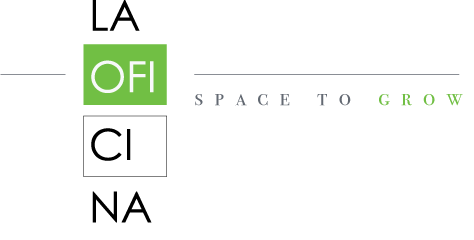
So, product costs become your pricing compass, guiding you to set prices that keep your bakery in business. So, as they don’t influence inventory valuation, period costs don’t create confusion about the value of unsold goods. “Period costs” or “period expenses” are costs charged to the expense account and are not linked to production or inventory. Costs and expenses that are capitalized, related to fixed assets, related to purchase of goods, or any other capitalized interest are not period costs. Since product costs are linked to a product, a company can report such costs in the category of cost of goods sold on the income statement. An understanding of period costs helps you analyze your financial statements.
Period Cost vs Product Cost

Instead, these expenses are attributed to selling and general administrative activities. Allocable but nontraceable costs to products and services—like our electricity example above—are called manufacturing overhead (MOH). We still include MOH as part of product costs even if we can’t trace them directly. Product and period costs are the two major classifications of costs that have different accounting treatments.
Period Cost vs Product Expense
Period costs are also listed as an expense in the accounting period in which they occur. Unlike period costs, product costs are tied to the production of a product. Some examples of what a product costs include, direct labor, raw materials, manufacturing supplies, and overhead that is directly tied to the production facility, such as electricity. Product costs are initially attached to product inventory and do not appear on income statement as expense until the product for which they have been incurred is sold and generates revenue for the business. When the product is sold, these costs are transferred from inventory account to cost of goods sold account and appear as such on the income statement of the relevant period. For example, John & Muller company manufactures 500 units of product X in year 2022.
Importance of Period Costs in Financial Statements
- He has a CPA license in the Philippines and a BS in Accountancy graduate at Silliman University.
- The company’s period costs are $169,800 ($147,300 operating expenses + $500 interest expense + $22,000 tax expense).
- These fringe benefit costs can significantly increase the direct labor hourly wage rate.
- A few good examples of period costs are advertising and administrative salaries.
- To understand the concept of traceability further, see our comparison of direct vs indirect costs, which discusses the nature of the costs and provides some examples.
- They are identified with measured time intervals and not with goods or services.
- Our writing and editorial staff are a team of experts holding advanced financial designations and have written for most major financial media publications.
The type of labor involved will determine whether it is accounted for as a period cost or a product cost. Direct labor that is tied to production can be considered a product cost. However, other labor, such as secretarial or janitorial staff, would instead be period costs. Both product costs and period costs may be either fixed or variable in nature.
To understand the concept of traceability further, see our comparison of direct vs indirect costs, which discusses the nature of the costs and provides some examples. Choosing the appropriate method of allocating Period Costs depends on factors such as the nature of the business, the complexity of operations, and the availability of data. By implementing effective cost allocation methods, businesses can gain insights into their cost structure, enhance decision-making capabilities, and ultimately drive sustainable growth and profitability. We’re firm believers in the Golden Rule, which is why editorial opinions are ours alone and have not been previously reviewed, approved, or endorsed by included advertisers. The Ascent, a Motley Fool service, does not cover all offers on the market. Professional service fees, such as your lawyer and CPA fees, are administrative expenses.
- You’ll also be able to spot trouble spots or overspending in administrative areas or if overhead has ballooned in recent months.
- An amount that should be charged to the current accounting period as an expense.
- Product costs only become an expense when the products to which they are attached are sold.
- In the case of manufacturers, it is any cost incurred to produce the products to be able to sell them.
- These costs are not included as part of the cost of either purchased or manufactured goods, but are recorded as expenses on the income statement in the period they are incurred.
Supercharge your skills with Premium Templates
If product and period costs are overstated or understated, or not recorded at all, your financial statements will be wrong as well. Most period costs are considered periodic fixed expenses, although in some instances, they can be semi-variable expenses. For example, you receive a utility bill each month that is not directly tied to production levels, but the amount can vary from month to month, making it a semi-variable expense. On the other hand, period costs are considered indirect costs or overhead costs, and while they play an important role in your business, they are not directly tied to production levels. Period Costs are typically classified as selling, general, and administrative expenses (SG&A) on the income statement. Examples include salaries and wages, rent, utilities, marketing expenses, and depreciation.
There’s no period cost formula because the included accounts differ from business to business. However, we’ll cover the most common period costs and how to calculate them. Product costs, on the other hand, are capitalized as inventory on the balance sheet. Manufacturers debit their raw materials inventory account when the purchase is made and credit their cash account.
Liabilities can either be short-term obligations that are due within one year of a normal accounting period, or they can be long-term liabilities and are not due for more than one accounting period. By definition, period costs are costs that are incurred during one accounting period and are not tied to the production of a product or the inventory costs. If liability is short-term and due within one accounting period and is not directly tied to the production of a product define period cost or inventory costs, then it could be considered a period cost. A good example of this would be the interest incurred on a loan for office equipment that isn’t directly tied to the production of products, as long as that interest is paid within the accounting period. The costs that are not classified as product costs are known as period costs. These costs are not part of the manufacturing process and are, therefore, treated as expense for the period in which they arise.
How to Allocate Period Costs?
Period costs are essential to business operations but don’t directly affect the final products. To continue our bakery example, let’s say we’re hiring an external bookkeeper to do the books. If a company’s management understands both product and period costs, they can use it in improving decision-making.
- In general, overhead refers to all costs of making the product or providing the service except those classified as direct materials or direct labor.
- People often confuse product and period costs due to the complexity of accounting terminology and the different ways these costs are treated in financial reporting.
- Grasping the difference between product and period costs serves as a financial compass for businesses.
- Imagine you are the owner and co-founder of MealCo, an organic canned meals producer company.
Considerations in Production Costs Calculations

In general, period expenses include items such as rent, utilities, insurance, and property taxes. They can also include legal fees and loan interest if these amounts are paid in advance. Production costs are usually part of the variable costs of business because the amount spent will vary in proportion to the amount produced. In a nutshell, COGS is the bill for creating or buying the stuff a business sells. Imagine your favorite bakery – the cost of flour, sugar, and the baker’s time to make those croissants you’re so fond of.

Recent Comments